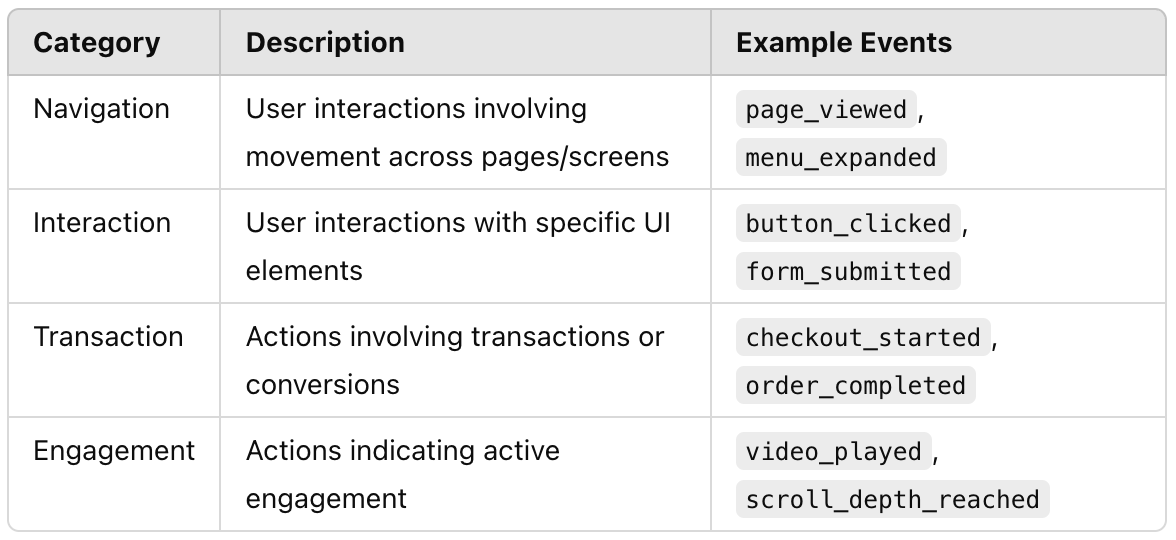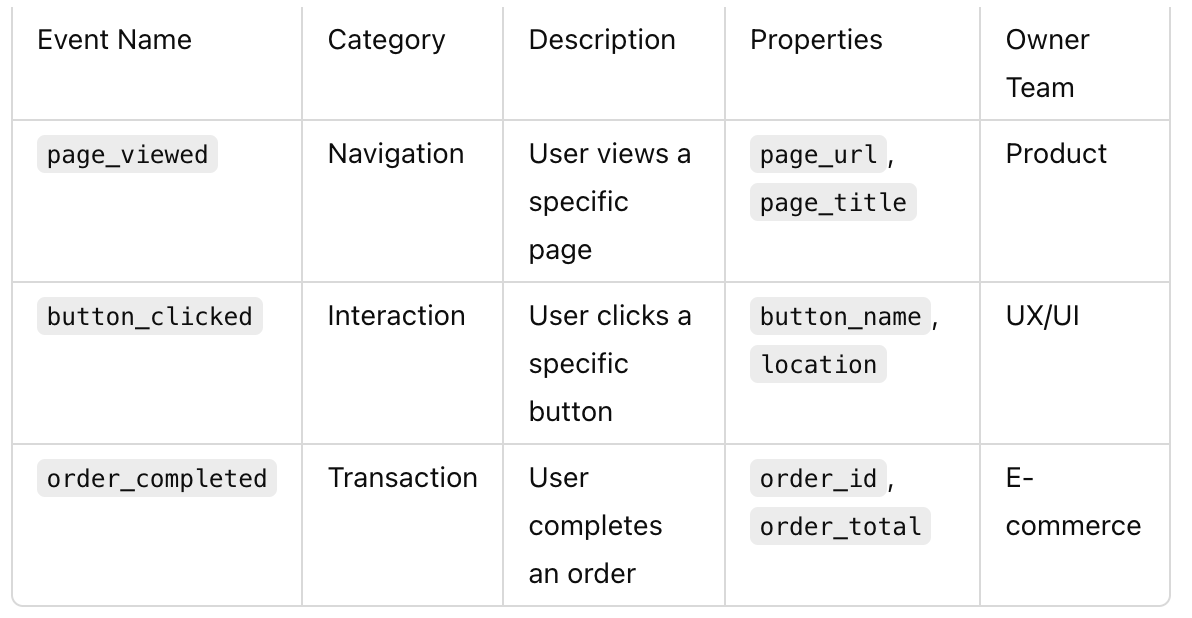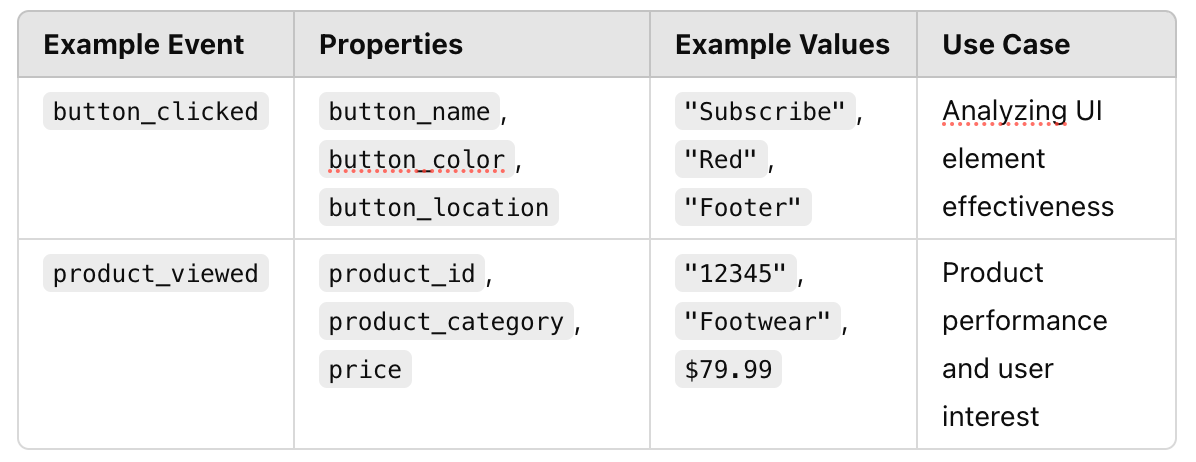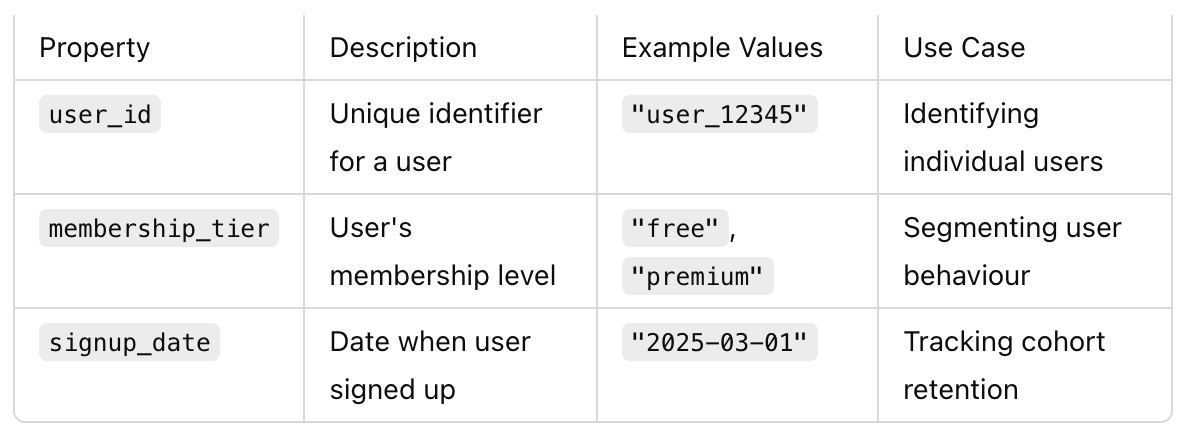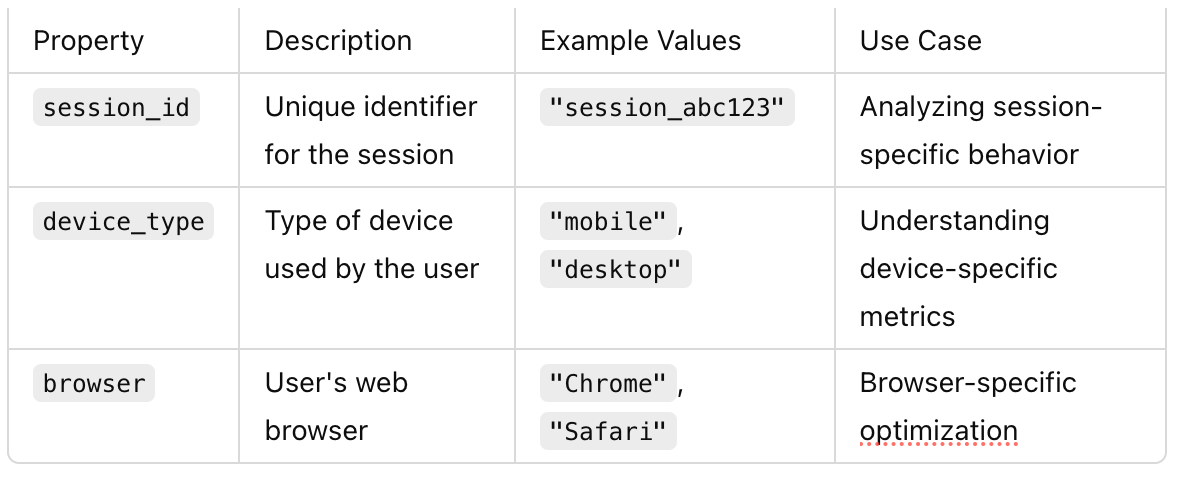The Art of Event Design: Turning Clickstream Data into into Actionable Insights
From Clicks to Conversions: Building an Analytics Foundation That Drives Results
Understanding user behaviour, optimising user experiences, and making data-driven decisions are critical components of successful Conversion Rate Optimisation (CRO). At the heart of these efforts lies event instrumentation—a process that, when executed well, provides the accurate and actionable data needed to drive meaningful insights. A well-designed event tracking system captures key user interactions, enabling precise analysis of conversion funnels, identification of drop-off points, and detection of user friction. Conversely, poorly structured event tracking can result in unreliable data, scalability challenges, and missed opportunities to improve conversions.
This blog delves into the art and science of designing event tracking systems specifically for clickstream analytics in CRO. We’ll explore best practices for event nomenclature, granularity, standardisation, event properties, schema maintenance, and more. Whether you’re an analyst, product manager, data engineer, or analytics specialist, this guide will equip you with the knowledge and tools to build a robust event tracking framework that directly supports your conversion optimization goals.
By the end of this post, you’ll understand how to:
Design events that capture meaningful user behaviors.
Establish a scalable and maintainable event schema.
Avoid common pitfalls in event instrumentation.
Leverage event data to uncover actionable insights for CRO.
Let’s dive into the principles and practices that will help you create a high-quality event tracking system tailored for CRO success.
Event Nomenclature: Crafting Clear and Consistent Names
Event names are the foundation of clickstream analytics—they identify user actions clearly and consistently. A strong naming convention improves readability, ensures uniformity, and simplifies data analysis across teams and platforms.
Guidelines for Event Naming
Be Descriptive Yet Concise: Use names that convey the action without excess words (e.g.,
button_clickedvs.user_clicked_the_submit_button).Follow a Consistent Structure: Use a verb-noun pattern (e.g.,
page_viewed,item_added,form_submitted) for uniformity.Use Snake_Case or CamelCase: Pick one format and stick to it (e.g.,
item_addedoritemAdded) for readability and tool compatibility.Avoid Ambiguity: Skip vague terms like
clickorevent; specify context (e.g.,menu_expandedinstead ofclick).Plan for Scalability: Add qualifiers to distinguish similar actions (e.g.,
checkout_startedvs.checkout_completed).
Example Naming Conventions
E-commerce:
product_viewed,cart_updated,order_placedContent Platform:
article_read,video_played,comment_postedSaaS Application:
dashboard_loaded,report_exported,user_invited
Benefits
Analysts interpret events quickly without heavy documentation.
Engineers implement and maintain events with less confusion.
Scalability improves as new features or products are introduced.
Granularity of Events: Striking the Right Balance
Event granularity defines the detail level in your tracking system. Too broad, and you miss insights; too detailed, and you’re buried in noise. The trick is aligning granularity with your business goals and analytical needs.
Determining Optimal Granularity
Start with Objectives: Identify what you need to measure (e.g., user engagement, conversion funnels, feature usage) and track supporting events.
Focus on Meaningful Actions: Capture significant interactions, not every micro-action (e.g.,
form_submittedover every keystroke).Consider Downstream Impact: Ensure granularity supports reporting and analysis without overloading storage or processing.
Practical Advice
Low Granularity (Broad): Use for high-level insights, like
page_viewedfor overall traffic.Medium Granularity (Balanced): Best for most cases, like
button_clickedwith properties likebutton_name.High Granularity (Detailed): Use for specific debugging or optimization, like
scroll_depth_reachedwith thresholds.
Visual Aid: Granularity Flowchart
Here’s a flowchart to guide your granularity decisions:
Example Scenario
For an e-commerce checkout flow:
Too Coarse:
checkout_event(misses key steps).Too Granular:
mouse_moved,field_focused(overloads pipelines).Just Right:
checkout_started,payment_selected,order_placed(tracks the funnel effectively).
Event Standardisation and Taxonomy: Building a Unified Framework
A standardised event structure and taxonomy ensure consistency across products, platforms, and teams, making data interoperable and analysis-ready.
Best Practices for Standardisation
Define Categories: Group events into meaningful, logical categories that reflect user interactions clearly.
Create a Taxonomy: Establish a clear hierarchy for organising events:
Event Taxonomy ├── Navigation │ ├── Viewed │ │ ├── Page (e.g., `page_viewed`) │ │ └── Menu (e.g., `menu_expanded`) ├── Interaction │ ├── Clicked │ │ ├── Button (e.g., `button_clicked`) │ └── Submitted │ └── Form (e.g., `form_submitted`) ├── Transaction │ ├── Started │ │ └── Checkout (e.g., `checkout_started`) │ └── Completed │ └── Order (e.g., `order_completed`) └── Engagement ├── Played │ └── Video (e.g., `video_played`) └── Reached └── Scroll Depth (e.g., `scroll_depth_reached`)Document Everything: Maintain detailed documentation for each event, including:
Implementation Tips
Use Prefixes for Multi-Product Setups: Clearly distinguish events across multiple products or environments (e.g.,
web_page_viewed,app_page_viewed).Standardise Property Names: Ensure properties within categories remain consistent for easier aggregation and analysis.
Event Properties: Adding Context to Actions
Event properties provide depth and critical context to raw event data, enabling richer analysis and actionable insights. Properly defined and structured event properties can significantly enhance the effectiveness of your analytics by providing precise details on user interactions, behaviors, and journeys.
Types of Event Properties
1. Event-Specific Properties
These properties describe the specific action taken by the user. They provide detailed context directly associated with each individual event.
2. User-Level Properties
User-level properties provide demographic, behavioural, or status information about the user performing the action, helping segment and analyse user cohorts.
3. Session-Level Properties
These properties describe the context of the session during which events occur. They help analyse user behaviour patterns within specific user sessions.
Guidance for Defining Event Properties
Keep Properties Relevant
Only include properties that directly support business objectives or analytical needs.
Avoid unnecessary properties that clutter data and complicate analysis.
Use Consistent Formats
Standardize naming conventions for clarity (e.g., snake_case or camelCase).
Ensure consistency in data types (dates in ISO format, monetary values as decimals).
Leverage Nested Structures
Utilize JSON-like nested structures to represent complex data, especially when dealing with multiple related attributes.
Schema Cleanliness and Maintenance: Keeping Your Data Tidy
A clean event schema prevents redundancy, reduces errors, and ensures scalability.
Strategies for Schema Maintenance
Conduct Regular Audits: Quarterly checks for unused or duplicate events.
Deprecate Gracefully: Mark and phase out obsolete events.
Version Your Schema: Use versioning to update without disruptions.
Automate Validation: Implement checks to enforce standards during deployment.
Conclusion
Effective event design for clickstream analytics blends art and science. Clear naming, balanced granularity, standardized taxonomy, enriched properties, and schema maintenance unlock actionable insights and scalability. Start small, iterate, and collaborate to build a robust, evolving system that transforms clicks into valuable understanding.
Happy tracking!
Get Started: Sample Events and Template
Download our comprehensive Event Design Template to standardise and streamline your event instrumentation today.
To help you kickstart your event instrumentation, here are a few sample events to consider:
page_viewed:
{
"event": "page_viewed",
"properties": {
"page_name": "product_detail",
"page_path": "/products/wireless-headphones",
"page_referrer": "/category/electronics",
"page_title": "Wireless Bluetooth Headphones | Our Store",
"scroll_depth": 0,
"time_on_page_seconds": 0
}
}order_completed:
{
"event": "order_completed",
"properties": {
"order_id": "ORD-12345",
"currency": "USD",
"total_value": 129.99,
"tax_value": 10.40,
"shipping_value": 5.99,
"coupon_code": "SUMMER20",
"discount_value": 26.00,
"products": [
{
"product_id": "P-123",
"product_name": "Wireless Headphones",
"product_category": "Electronics",
"product_price": 79.99,
"product_quantity": 1
},
{
"product_id": "P-456",
"product_name": "Phone Charger",
"product_category": "Accessories",
"product_price": 19.99,
"product_quantity": 2
}
],
"payment_method": "credit_card",
"shipping_method": "standard"
}
}



